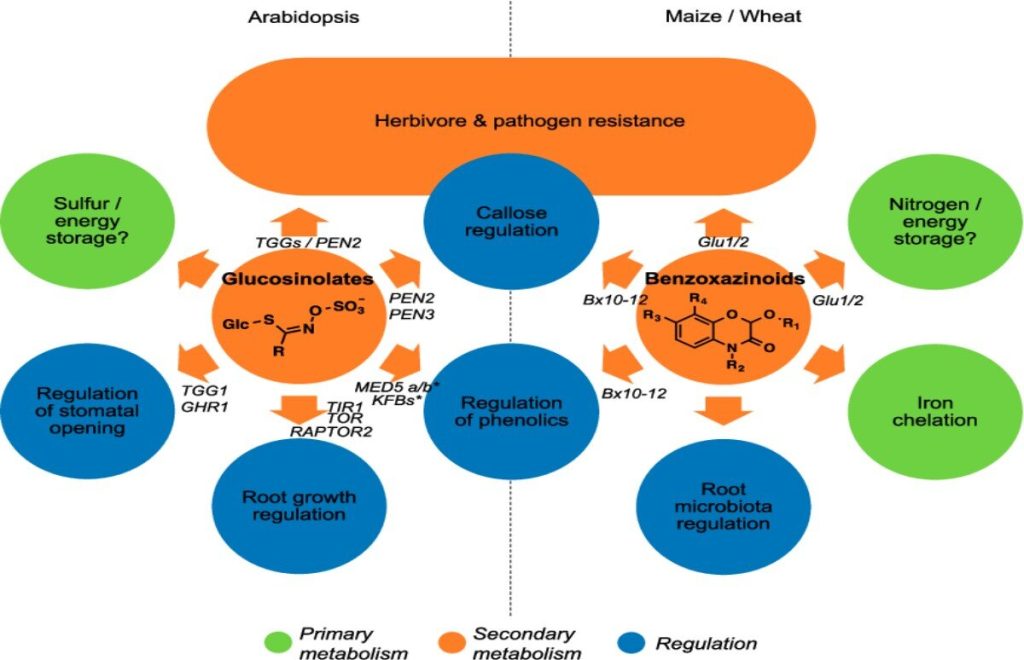Primary Metabolites
Primary metabolites are involved in growth, development, and reproduction of the organism. The primary metabolite is typically a key component in maintaining normal physiological processes; thus, it is often referred to as a central metabolite. Primary metabolites are typically formed during the growth phase as a result of energy metabolism, and are deemed essential for proper growth. Examples of primary metabolites include alcohols such as ethanol, lactic acid, and certain amino acids. Within the field of industrial microbiology, alcohol is one of the most common primary metabolites used for large-scale production. Specifically, alcohol is used for processes involving fermentation which produce products like beer and wine. Additionally, primary metabolites such as amino acids– including L-glutamate and L-lysine, which are commonly used as supplements– are isolated via the mass production of a specific bacterial species, Corynebacteria glutamicum. Another example of a primary metabolite commonly used in industrial microbiology includes citric acid. Citric acid, produced by Aspergillus niger, is one of the most widely used ingredients in food production. It is commonly used in pharmaceutical and cosmetic industries as well.
 Figure: Aspergillus niger: Microorganisms such as Aspergillus niger are used in industrial microbiology for mass production of citric acid.
Figure: Aspergillus niger: Microorganisms such as Aspergillus niger are used in industrial microbiology for mass production of citric acid.
Secondary Metabolites
Secondary metabolites are typically organic compounds produced through the modification of primary metabolite synthases. Secondary metabolites do not play a role in growth, development, and reproduction like primary metabolites do, and are typically formed during the end or near the stationary phase of growth. Many of the identified secondary metabolites have a role in ecological function, including defense mechanism(s), by serving as antibiotics and by producing pigments. Examples of secondary metabolites with importance in industrial microbiology include atropine and antibiotics such as erythromycin and bacitracin. Atropine, derived from various plants, is a secondary metabolite with important use in the clinic. Atropine is a competitive antagonist for acetycholine receptors, specifically those of the muscarinic type, which can be used in the treatment of bradycardia. Antibiotics such as erythromcyin and bacitracin are also considered to be secondary metabolites. Erythromycin, derived from Saccharopolyspora erythraea, is a commonly used antibiotic with a wide antimicrobial spectrum. It is mass produced and commonly administered orally. Lastly, another example of an antibiotic which is classified as a secondary metabolite is bacitracin. Bacitracin, derived from organisms classified under Bacillus subtilis, is an antibiotic commonly used a topical drug. Bacitracin is synthesized in nature as a nonribosomal peptide synthetase that can synthesize peptides; however, it is used in the clinic as an antibiotic.
 Figure: Erythromycin tablets: Erythromycin is an example of a secondary metabolite used as an antibiotic and mass produced within industrial microbiology.
Figure: Erythromycin tablets: Erythromycin is an example of a secondary metabolite used as an antibiotic and mass produced within industrial microbiology.


